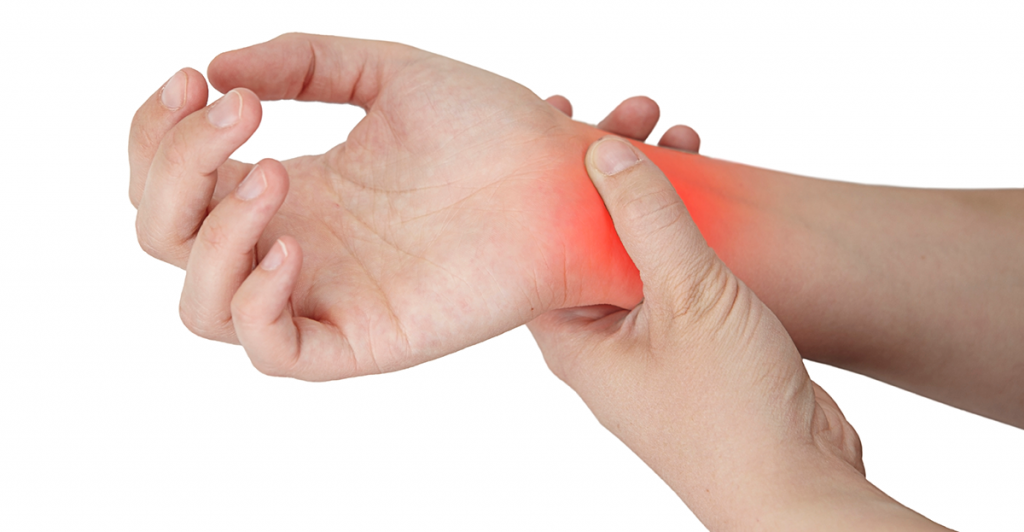Physiotherapy works the best for the healing of repetitive strain Injuries or RSI. RSI is a pictorial term used to describe Overuse Injury. Another name given to describe RSI is the Occupational Overuse Syndrome, sometimes called tendinitis or chronic tendinopathy.
How are repetitive strain injuries caused?
These strains are generally caused as a result of repetitive action or unchanged movements. However, similar constant movements damage the soft tissues like nerves, muscles, tendons and sheaths of the tendons by causing inflammation and, as a result, causing unbearable pain.
How can it become severe?
Repetitive strain Injuries becomes severe when the motion is repeated too frequently on the tight tissues of the body like the limb or the forearm that damages the body’s natural rate of repairment.
Repetitive Strain Injury Cure
People who are suffering from symptoms of repetitive strain Injuries will be benefitted if they include exercising in their daily routine. An intense workout is not necessary to cure the pain caused by RSI; simply walking or taking up swimming as part of your daily routine will serve your purpose. Aerobics and stretching exercises have proven to be very beneficial for patients suffering from repetitive strain injuries. These exercises help in the tissues’ loosening and improve the body’s natural power to repair the tissues. Let us see how stretching can help relieve you of the pain from RSI.
Repetitive Strain Injury Exercises
Strengthening Aerobics exercises
Strengthening Aerobics exercises do wonders in alleviating the pain in areas like the fingers and the toes. You can do strengthening exercises at home just by using a rubber band. Put the rubber band on the fingers, let the rubber band twirl along with your fingers and then stretch the rubber band with ease as long as you can.
-
Shoulder Stretch for repetitive strain Injuries
This exercise benefits your shoulders if you might have experienced strain or minor injuries on your shoulders. It helps in removing the shoulder tension and loosens the muscles there to make them more flexible. To start with this exercise, first, you need to relax a little with deep breathing. Deep breathing helps cool down the mind, which is very important before starting any exercises.
Interlace your fingers and raise both the arms above your head as a stand at ease. Both the palms should face upwards with both your arms in a vertical line with the respective ears. Now look straight and release the blade of your shoulders at ease on your back. Hold the position for 2-3 minutes while taking deep breaths. Now, slowly let both your arms fall on the sides, rolling both the shoulders in forward and backward directions. Repeat these stretches by inhaling and exhaling deeply for full five to six breaths.
-
Heart Opener
To start this exercise:
- Stand still with both your feet wide apart.
- Look straight forward and bring both arms behind your back.
- Clasp the arms together as if they have been twanged into the fist behind the base of your back.
- Lift the hands as they are clasped into your fist and try to bring them high from behind, pulling the blades of your shoulder together.
If you enjoy doing these exercises, you can do a little alteration by folding the clasped hands over your legs and pulling them towards the floor.
-
Forward Bend
This exercise requires you to fold your legs while keeping the hip and your feet wide apart. If you feel that your hamstrings do not allow you to bend forward while keeping your knees straight, then you can bend your knees a little. Now grab both the elbows with the opposite hands and allow your head hand down towards gravity. Hold on to the posture for five to six full breaths before you release the position. Then stand up, look straight and after a few seconds, repeat the posture. Repeat this as long as you don’t feel any pain.
-
Eagle Arms
Stand with both your feet wide apart. Now holding both the arms straight from the sides and parallel to the floor, swing them towards each other so that the left elbow comes over your right one and vice versa. Then bend both the elbows in such a way so that they touch the back of your hands. Now make both the palms face each other by hooking one hand over the other one. Once you have done the elbow wrapping, try to pull both the elbows apart while still in the lifted position and your palms pressed into each other. You may keep the shoulders relaxed while doing this exercise. Hold this position for five to six full breaths. Now unwrap both the arms and hold them sideways again with the opposite elbow.
Furthermore, on the top, start swinging your arms again, backwards towards each other. It should be just as you have done with the other elbow and arm. Hold this position for five to six full breaths as the previous one. Again, you will feel a stretch in your neck and between your shoulder blades that will help relieve the strains there.
Thus stretching Aerobics reduce the muscle tension and restore the original range of your motion but never overdo the stretching exercises as it may worsen the pain. You will feel much relaxed after doing these exercises. Doing all the exercises once or twice a day is fine. The most important thing with Aerobics to keep in mind is that you need to breathe widely with your full lung capacity, and you should not try too hard for these exercises. If something hurts, ease off the postures and continue breathing while you carry with the exercises.

